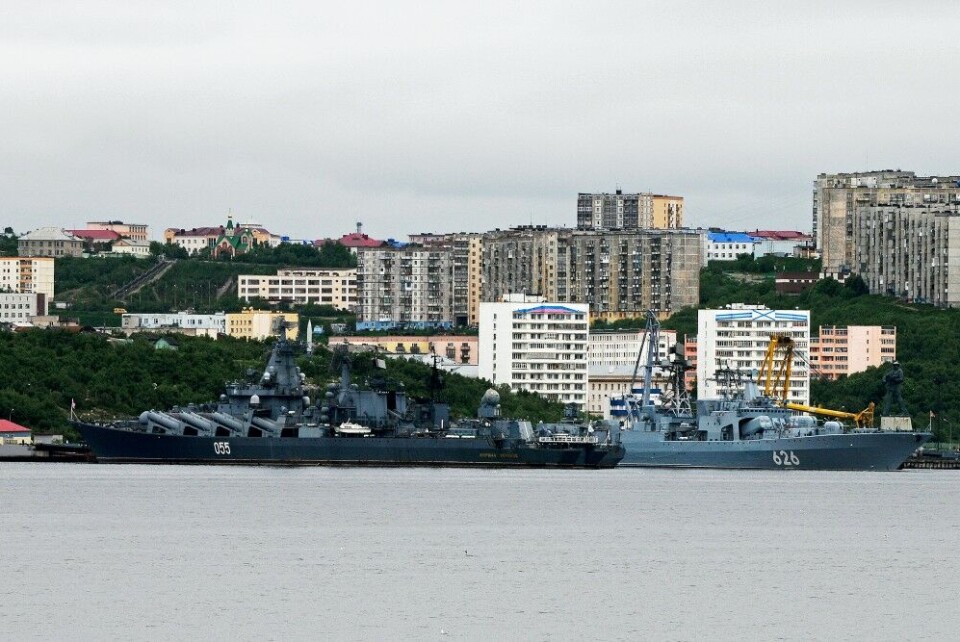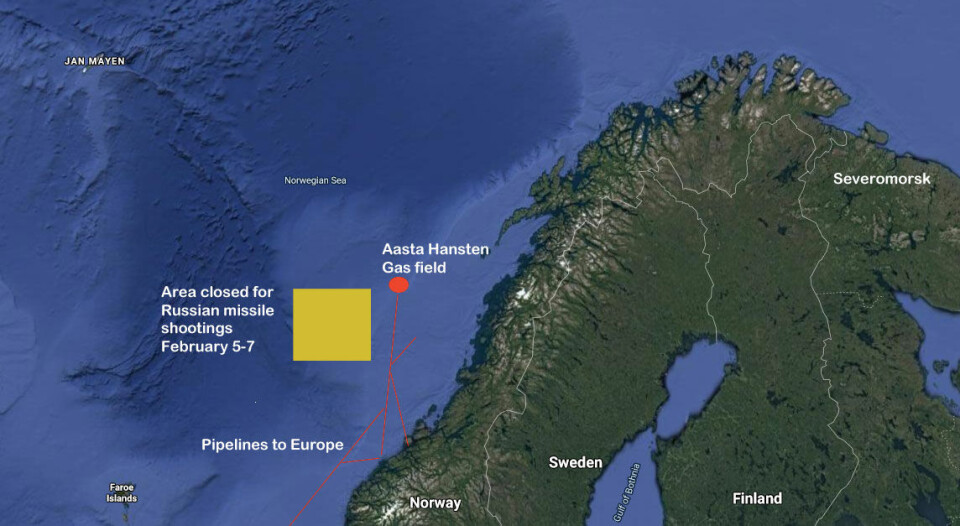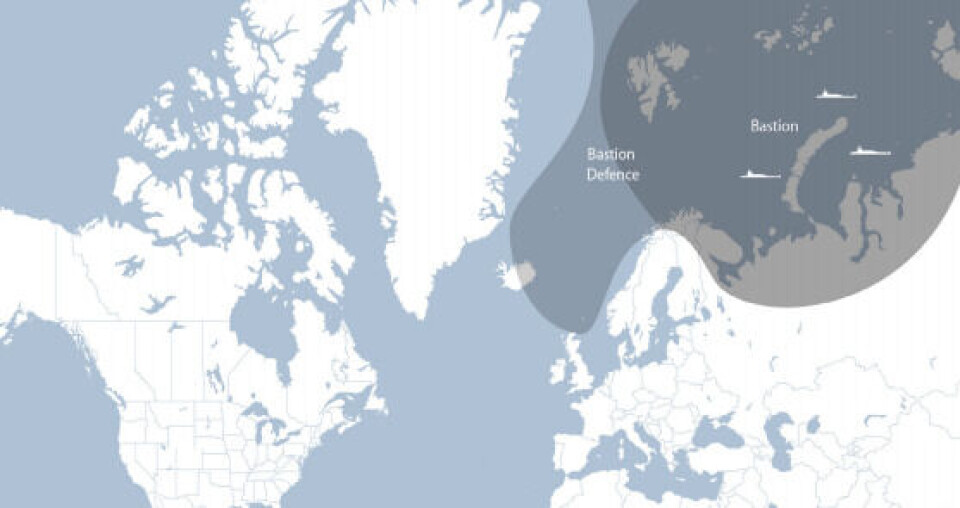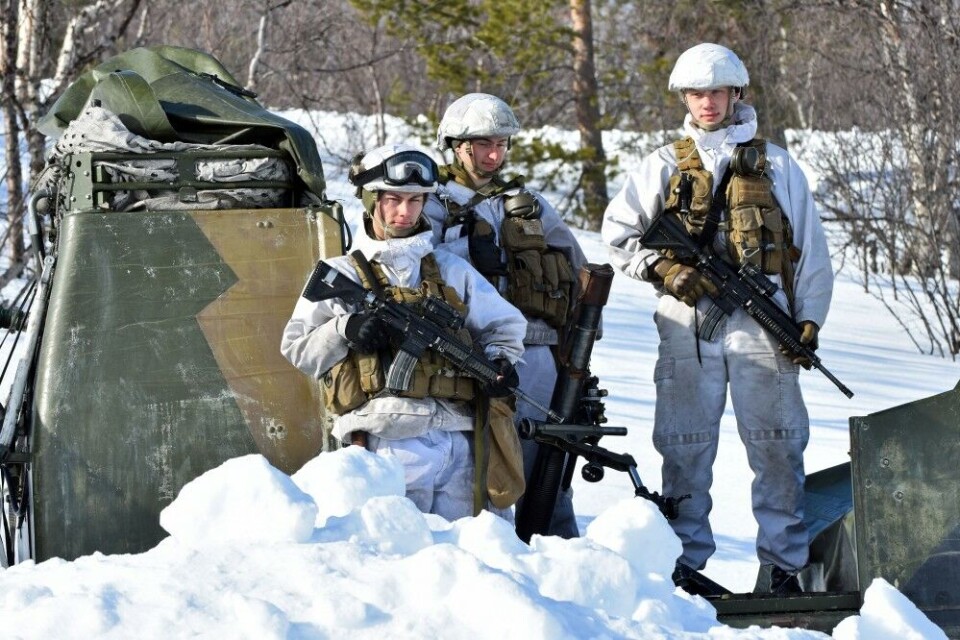
These two warships are now on their way for missile drill near Norway’s northernmost gas-pipeline to Europe
Norwegian Intelligence Service (NIS) sees the announced missile shootings as a response to next month’s exercise Cold Response which takes place north of the Arctic Circle.
It was newspaper VG, with reference to NIS, that first reported about the Russian Navy’s announcement.
The Norwegioan Joint Headquarters at Reitan near Bodø confirms to the Barents Observer that a NOTAM (Notice to Airmen) is set for an area in the Norwegian Sea west of Helgeland.
The area with warnings to civilian air traffic is just south of the Arctic Circle and in near several Norwegian offshore installations, including Aasta Hansten which is the northernmost gas field connected to the network of pipelines fueling Europe with natural gas.
This is also an area with much shipping and fisheries.

The NOTAM, with reference A 0269/20, is valid from February 5th in the early morning to the 7th in the afternoon.
It is not said which missiles are to be tested, or if at all any live-shootings will happen.
Russian warships from the Northern Fleet have on two occasions earlier announced missile shootings in the Norwegian Sea off the coast of northern Norway without one single missile being fired.
Among the Russian warships now sailing north on their way back to their homebase Severomorsk on the Kola Peninsula are the large missile cruiser “Admiral Ustinov” and the destroyer “Vice-Admiral Kulakov”.
Both vessels participated in an exercise outside the Russian Black Sea naval base in Sevastopol on the coast of the annexed Crimea in early January.
“Vice-Admiral Kulakov” sailed out from Severomorsk in late October last year, while “Admiral Ustinov” has been on a world voyage all since last summer.
Last week, the two ships crossed the Bay of Biscay were they condected anti-submarine training tasks when sailing north in direction the English Channel, according to press service of the Russian Northern Fleet.
The ships passed the waters between Dover and Calais on Saturday morning. The ships are Subday in the North Sea, off the west coast of Norway.
Head of the Norwegian Intelligence Service, Lt. Gen. Morten Haga Lunde says to VG that such exercise close to Norwegian waters should be seen as part of Russia’s bastion defense.

If Russia feels threatened, the military plan is to expand its bastion defense beyond the Barents Sea, conducting sea denial operations in the maritime spaces of northwestern Europe, all the way to the Greenland-Iceland-UK (GIUK) gap.
Over the last two years, Russia has exercised the bastion defense concept with surface warships, submarines and aircraft several times in the Norwegian Sea.
Last August, the exercise Ocean Shield, originally taking place in the Baltic Sea, made a surprise move, lasted one week longer than planned and the warships sailed to the waters ooutside northern Norway.
It is obvious that Russia want to show its dissatisfaction with this winter’s NATO-exercise in Norway, Cold Response,” Haga Lunde said to VG.
Cold Response takes place from 2nd to 18th of March, but already now there are visible military activity as some allied participants are arriving to prepare themselves for the exercise.
The area of exercise stretches from Narvik in the south to Finnmark in the north, but the main activities will be located near the military camps in Troms.

The Norwegian Armed Forces informs that the aim is to secure allies’ ability to conduct multinational joint exercises with a high-intensity combat scenario in demanding winter conditions.
That includes to train the large amphibious capacities between the ciast and the shore.
Between 15.000 and 16.000 soldiers from the USA, the United Kingdom, the Netherlands, France, Belgium, Germany, Denmark, Latvia, Finland and Sweden will train with the Norwegian forces in the exercise.
Earlier in January, the Barents Observer reported the United States have withdrawn about 3.000 of originally planned 12.000 soldiers from the exercise due to the pressing situation in the Middle East.
Support free and independet journalism in the north.
Give a small donation to
the Barents Observer.
















